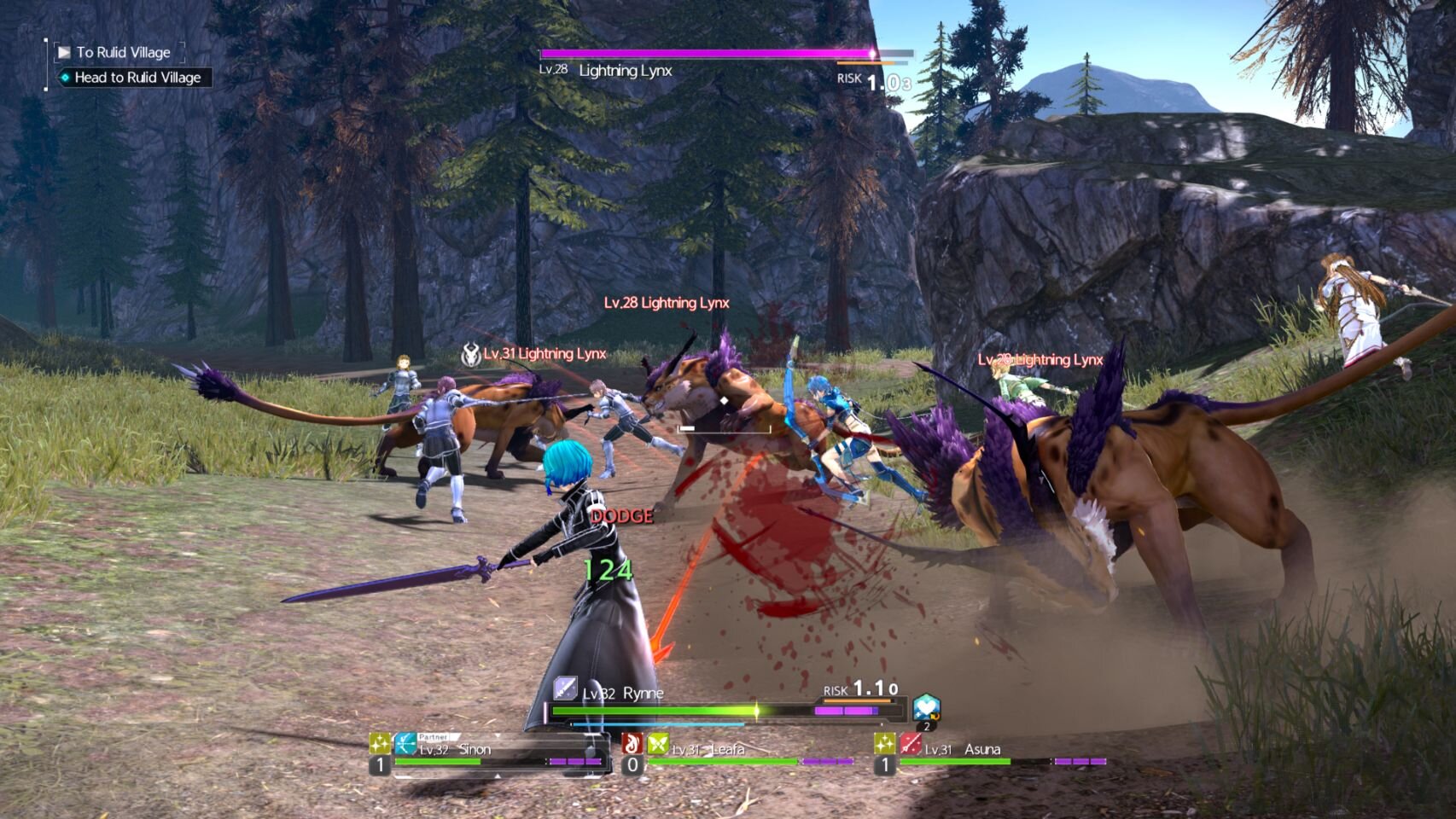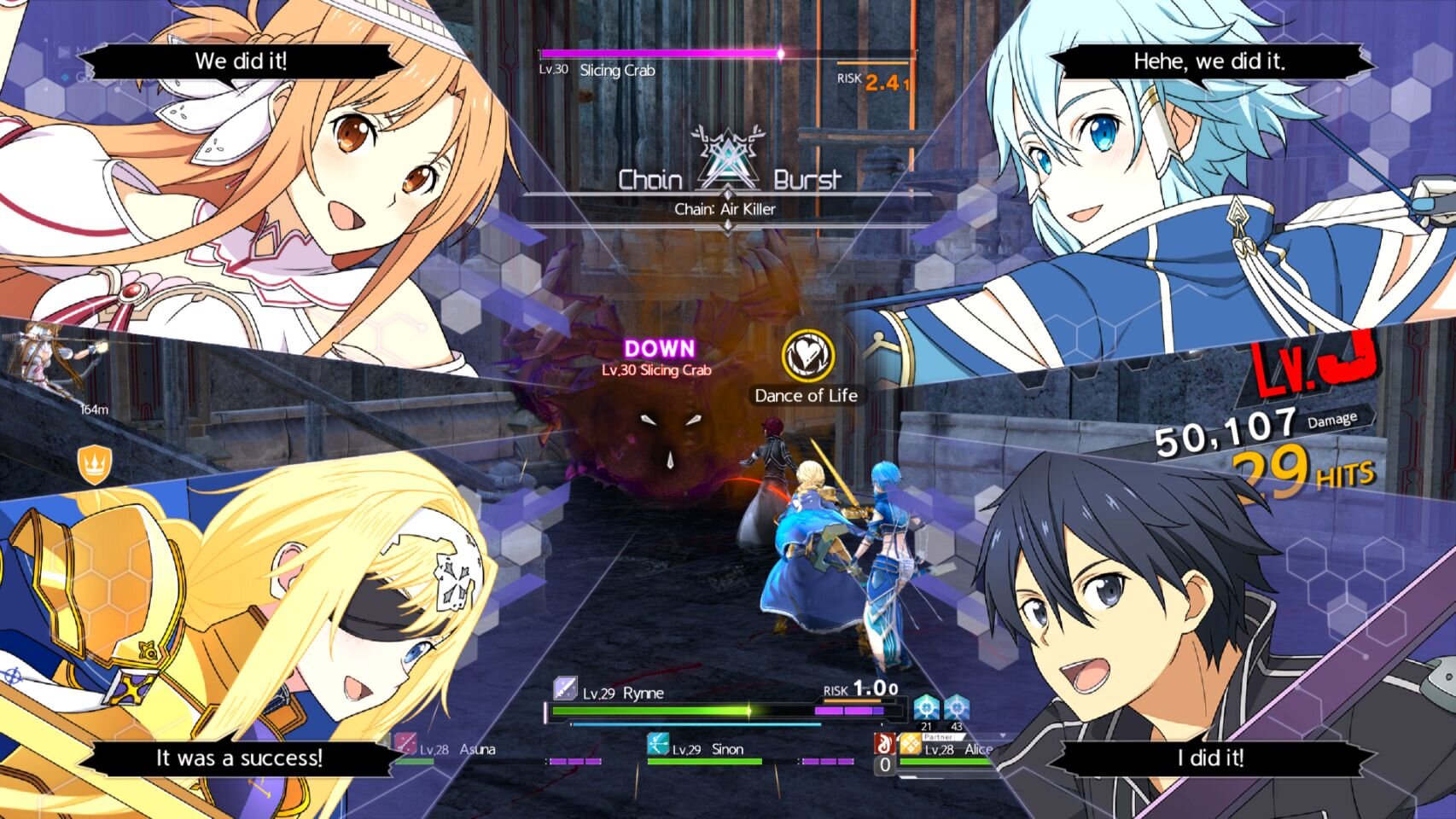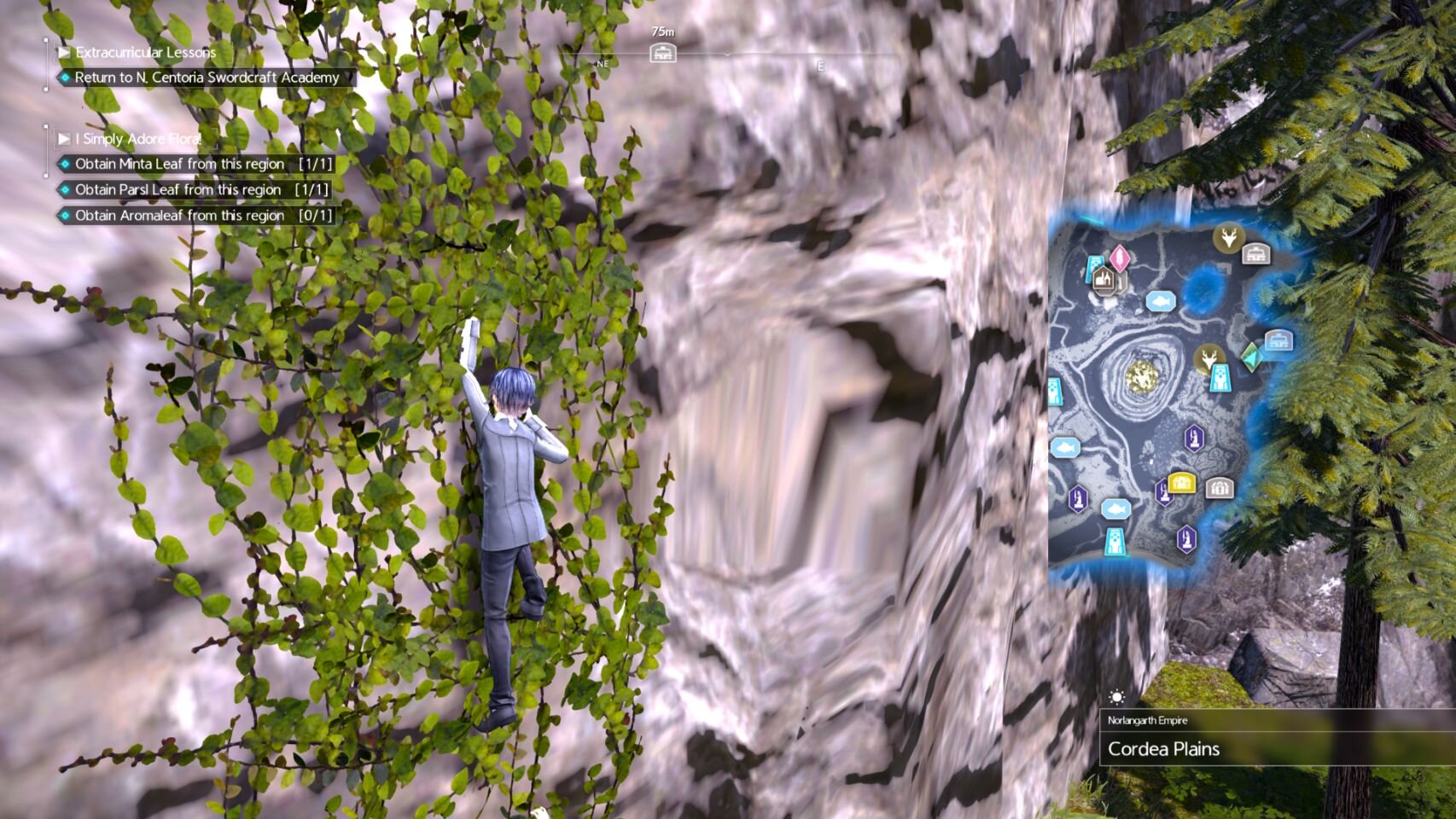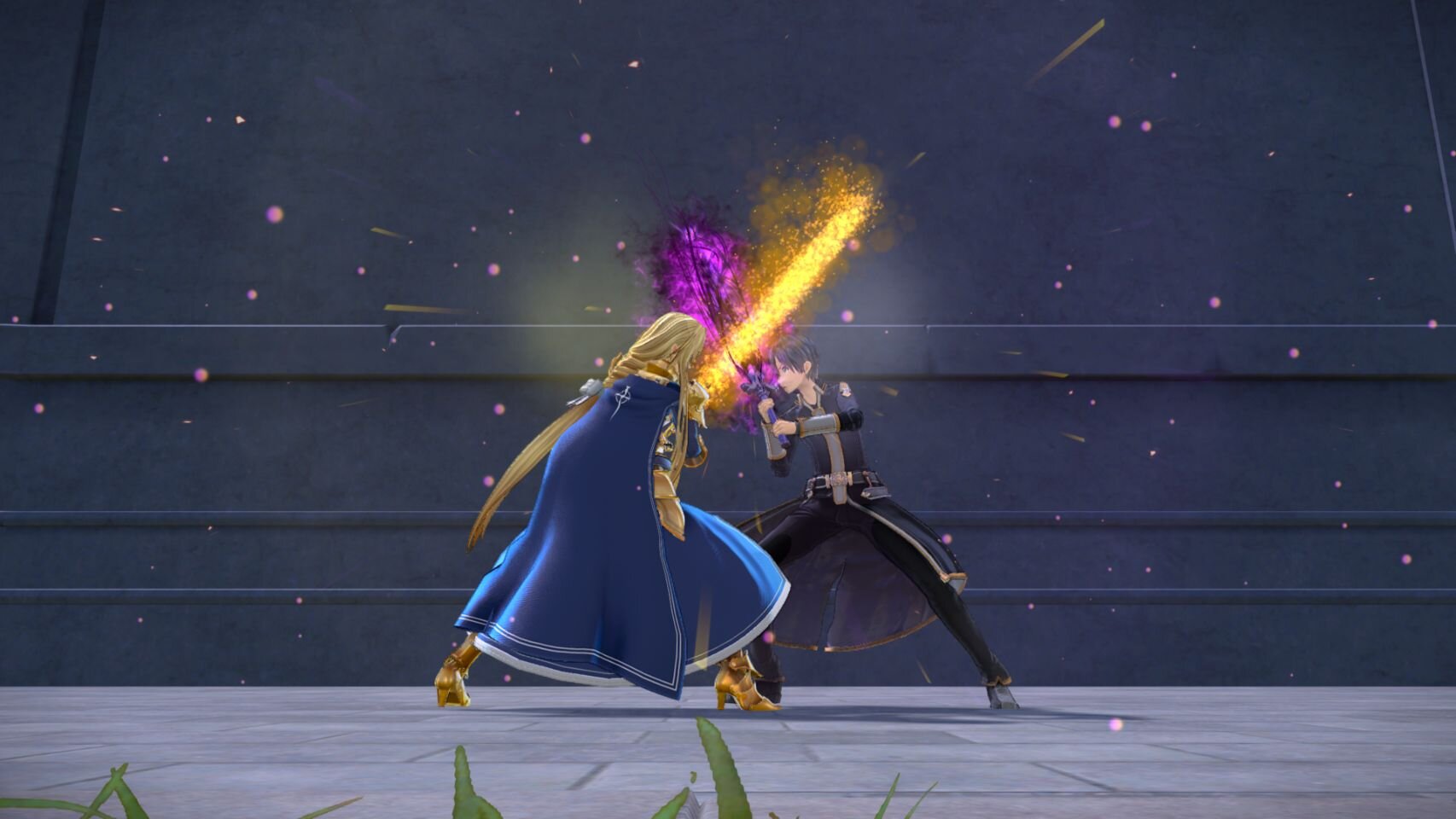It only took minutes into Sword Art Online: Alicization Lycoris for me to wonder if I had made a mistake buying it. I had seen trailers and some gameplay online, but playing it was another story altogether. While the game is set in the biggest environments the series has seen thus far, the game feels drastically too ambitious for its own good, as this large scale adventure is plagued by incredibly poor texturing, constant pop-up, and significant framerate drops. These issues and more are everywhere, and while the game has seen a patch or two since release, the game at its core suffers from an over-written narrative, inconsistent pacing, and some bizarre choices that have several of its advertised features locked behind a dozen hours of progress. While there is a good game buried deep in here, it’s one that sometimes isn’t worth pursuing.
Sword Art Online: Alicization Lycoris, which I’m just going to shorten to either Alicization Lycoris or AL, for the sake of the review, is adapted from the latest run of the anime, but it strays from that source material fairly early on. The game borders around 60 hours long, but the pacing and the way the story is slowly told will make it feel drastically longer. Much like a few JRPG’s, there will be various mediums in which the story is told; you’ll have a few pre-rendered cutscenes that are a joy to watch, the in-game models that are largely just ok, to visual novel style conversations that often don’t mimic the tone or situation of the scene. These different ways to convey the story and conversation are often bookended by painfully long and frequent load times, to say nothing of the several minutes it takes to load environments.
Another annoyance is the inability to move or perform any action while the game saves, or the few times it autosaves, each taking around 20 seconds, and it’s something you’ll be doing hundreds of times across the 60+ hours to wrap credits. There are also a few instances where you’ll be unable to save as you push through multiple boss encounters that are staged back to back. Deep in chapter one, there is such a series of encounters, of which I had to reattempt the series of fights multiple times as it would lock up during one of the last encounters at the exact same moment, luckily on my third attempt, with several hours lost, it managed to let me complete the battle and I luckily didn’t have the game lock up at any point from then on.
Alicization Lycoris is simply not optimized for any of its available platforms and it shows across all facets of gameplay and design. From the loading times to the framerate hitting single digits during combat, to the AI often just standing around, this game is not polished in any single capacity. The worst offender is the constant pop-up and watching trees and mountainsides swap from their lower detailed models to their more close up complex ones in droves as you simply just walk around. This happens all the time with not a single environment safe from it. Usually, developers create worlds in such a way to hide a lot of that level streaming, but AL decides to have all of it render at once, with instant fast travel being the only benefit from it, even if the world slowly builds around you in the process. I’ve played broken or poorly optimization games time and time again, but this might be the biggest offender I’ve seen this generation. This title, at times, can often feel as if it’s an early look at a game that is still a year or two out from release. but here we are.
As Kirito, the series' main protagonist, you’ll wake up in the Underworld, a land set within a mysterious new game. Eventually, you’ll join up with a young man named Eugeo, and venture out to find their missing friend, Alice; a girl whom Kirito also has memories of, even if he is unsure exactly how. This has the pair venture out from the village and eventually discover several dark secrets about the world, and the plans its Administrator has for its populace. There is a somewhat interesting dynamic to the truth behind everything, but much of the story is so overwritten and painfully paced out that it’s hard to really have it remain impactful or interesting for the duration of the whole game. While some players may be excited for the game to be as long as it is, it’s a fairly lengthy game for all the wrong reasons. Much of the dialogue and conversations between characters repeat a great deal of the story and you will often find yourselves having the same conversations, hearing the same things, completing the same narrative hoops for hours upon hours, barely moving the plot needle ahead even some ten to fifteen hours later.
As was the case with the anime, Kirito and Eugeo will enroll themselves into the Sword Mastery Academy, and the process to them getting into the school is heavily glossed over, and is instead regulated to a voice-over explanation of a 2-year time jump around the events that transpired during that time. Regardless, It’s here, at the Academy, where you’ll meet several students and teachers that will become more important later on and a wealth of combat tutorials that will instruct you on new combat tactics you’ll take into battle with you. The time at the school will come to end during a very dark and disturbing scene, one that causes Kirito and Eugeo to leave the school and continue their quest, even if the manner of its execution isn’t quite what the pair had in mind. As for the rest of the story, it diverts from the anime greatly and while the first 23 episodes of the anime are pretty accurately replicated here, the game shifts greatly from episode 24 and goes its own path, largely because of the inclusion of a new character not present in the anime, one whose story is so painfully overexplained throughout the game that you’ll likely become tired of their inclusion.
Once Kirito and Eugeo’s initial quest plays out, you’ll return to the Academy with plenty of new and familiar allies, putting a plan in a place to deal with the new threat that has arisen, and this is where the rest of the game ignores much of the anime. You’ll tackle a wealth of story quests and missions built around this new character and attempt to stop the darkness that has since consumed the land. Again, the story when focused is very enjoyable with some action-packed scenes that are well done, but much of that story is told in the blandest way possible and feels like it overstays its welcome far too often. I will say that despite the final battle in Chapter 5, the rest of said chapter is incredibly wasted for scavenger hunt missions and content that feels as lacking as its abundance of piss-poor side quests that are often nothing more than fetch quests. Hell, there are even some side quests where you can simply buy the item directly from the quest giver and then hand it back to them. Out in each of the zones, there are high-level quests, challenges, fishing, and items to discover all over the map that can keep you rather busy, for as trivial as most of that stuff is, but it’s hard to say how much time you’ll want to put into them given how poorly the game runs.
The game also sets up a constant gameplay loop for well over a dozen hours of tracking down mutated plants called Clamps as they become a plot device for the better half of the game. These plants can take an awful lot of abuse, coming across as just massive health bars to consume your time, despite Kirito being able to cut them down with a single slice in any cutscene. In fact, there is a scene in the late game where he literally swings his sword once and destroys a dozen plants, yet in gameplay, it takes literal minutes to chip away at their health. These “Clamps” become a bit too much of a focus and eventually start to feel like padding to the game, serving as a pretty insulting way for us to spend hours upon hours of gameplay, chipping away at them. Eventually, you’ll encounter even bigger Clamps that then require you to scour the entire map, destroying the new clamps that have since popped up only to then go back to the larger plant and eventually cut that one down too; This happens constantly.
Combat can certainly be flashy and chaotic, but the framerate takes a dive when too much is going on, which is generally how most battles will go down. There is also a sluggish reaction time to much of your actions that doesn’t go away and is further hampered by much of the combat or being hit happening in slow motion. Each character in your party can equip four special attacks, and four offensive or defensive skills, such as healing regeneration or the ability to boost your attack or defense. Your attacks are based on your weapon, and while you can equip any weapon to Kirito, I found the story-based sword of his to be far more suited to him and kept it equipped for much of the game. In fact, the only way to upgrade any of the weapons for your teammates is to have Kirito equip them first, unlocking their skill tree as you’ll use skill points to dive deeper into them, unlocking new attacks and skills for Kirito and his team. It’s rather strange that for me to upgrade Sinon’s bow, that I first have to have Kirito equip a bow to unlock that particular skill tree.
Kirito can also dodge, which aids in building up a meter to perform team attacks or some powerful solo attacks that can cause some significant damage. That said, I’ve had my sword’s main special attack consume the meter but not perform the move and this happens largely during the one on one battles that are only present in a few of the game’s six chapters. These battles see Kirito and his foe slowly walking around each other, killing the pacing that the regular team-based combat has ten-fold and comes across as the least impressive encounters featured in the game. Kirito’s dodge can also break away from some of the canned animations that will see Kirito slowly finishing an attack, often leaving him vulnerable as he just stands there holding his sword into the air. While much of this is to give you a timing window to continue attacks, other times it just slows down any intensity the battle was engaged in, adding to that sluggish and slow-motion complaint I made about the combat earlier. The game also features a few deeper mechanics, including guard breaking, aerial combo's, and elemental magic attacks, as well as a few that are introduced early on and then not used for dozens of hours later.
Your party can consist of four characters, Kirito and three others from a fairly large selection of new and returning favorites. Each companion can have certain behaviors altered for how their AI works and there is a decent amount of different settings to make them more effective in battle. The problem is that it takes a considerable amount of time to get them even usable, and you’ll often have to swap to that character and give them commands, as the camera bounces from character to character before snapping back to Kirito. Eventually, as you unlock more of their skill tree and tinker with their AI behaviors, they become far more suited for combat, but I also had to swap to them during some of the more difficult battles to pull off their special attacks more frequently than they were doing themselves.
Perhaps the most puzzling aspect of Alicization Lycoris is just how many features are locked behind a solid 12-15 hours of progress. Once you’ve reached a certain point in the story, you’ll be able to change the look of Kirito, though his default look will override your choice in cutscenes, to unlocking the 4-player co-op and a difficulty setting, modes that honestly should have been available from the start. If you had planned on playing this with a few friends after seeing the game allowed a co-op experience, you’ll have to sink a ton of time into the game first and it’s hard to say if you’ll even want to continue the game once you’ve reached that point. While the co-op does make the game significantly better, my time with it was largely dealing with constantly dropped games, to matchmaking only working half the time. It’s also here where you’ll unlock the ability to strengthen your bonds in a romance type of system as you perform tedious prompts to eventually unlock a scene between Kirito and each of the characters, even one with his pal, Eugeo. I will say it’s rather awkward watching Kirito have these private moments with a few of the underage cast, which for the record, I watched via an “all romance scenes” video on Youtube as I focused my own efforts on Sinon, my favorite SAO character.
I’ve said it before, but Alicization Lycoris is not a good looking or technical sound experience with load times that are so frequent that you’ll have plenty of time to check your phone or go grab a drink. The game can aesthetically look good, but the texturing is wildly inconsistent, to some textures being as blurry or stretched like something from the N64, as seen above. There are moments where the game looks fantastic, only for it to start loading in more trees, grass, or start rendering half its mountainside for you to just lose any excitement you had for the new area to explore. Character models are pretty good, even if most of the cast share the exact face and there are only a few characters that really emote at all. That said, the game is bright and colorful and if more care was taken with its world and the polish to make it run well, then we’d be having a very different conversation here.
Apart from what I’ve mentioned before, the menu systems are all over the place with certain tabs having multiple pages that could have been structured and condensed far better. While a nitpick, I found it odd that LT/RT is used to move within the smaller tabs, and LB/RB is used to navigate the core tabs, a flip on what a large majority of other games do. Again, a small gripe, but one that I kept hitting the wrong buttons on time and time again. The UI in regards to its map and tracking quests on it is not terribly intuitive as the map will not swap icons between in-progress quests and new quests, so you’ll need to explore the quest system and map in detail to see what is new and then zoom in on the map to track it. The game is also Japanese only in regards to its voice acting, with some very dry and over the top vocal work that isn’t terribly great to listen to. While it’s not something I’m docking points towards, the lack of an English dub really kept me from getting invested in the characters and kept most of my attention on the subtitles rather than the action. That, and anything spoke during battle was completely lost on me.
Alicization Lycoris is not a bad game but it does have a vast amount of issues that may make it come across as one. The performance issues are still painfully bad despite any of the patches the game has had since launch, and the core experience of how it delivers its story is something that is not likely to see anything done about it. If they can fix the framerate to run at least at a locked 30 fps with addressing the constant visual pop-up, and maybe tweak combat to not feel as sluggish, then I would certainly be far more comfortable recommending the title to those who at least have an interest in it. Fans of the anime may be thrilled to see much of it recreated here, but the story that follows the end of chapter one is still something that is not well told, despite how engaging some of its ideas are. Currently, Alicization Lycoris is a broken and yet occasionally enjoyable game that needs a lot of work done to make it the best in the franchise, but much like the next game in the series, all this will be left behind to reinvent the franchise yet again, but maybe that’s for the best.
Sword Art Online: Alicization Lycoris was purchased by the reviewer and played on an Xbox One X.
All screenshots were taken on an Xbox One X.
















